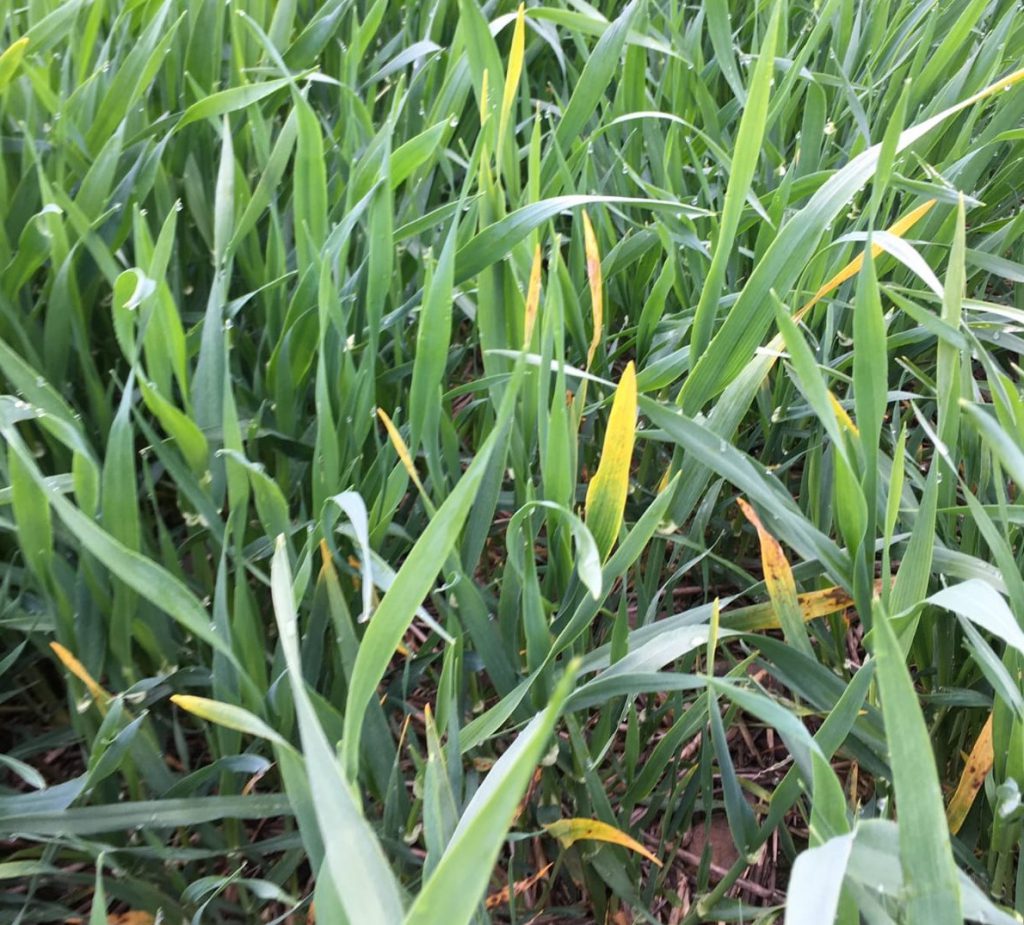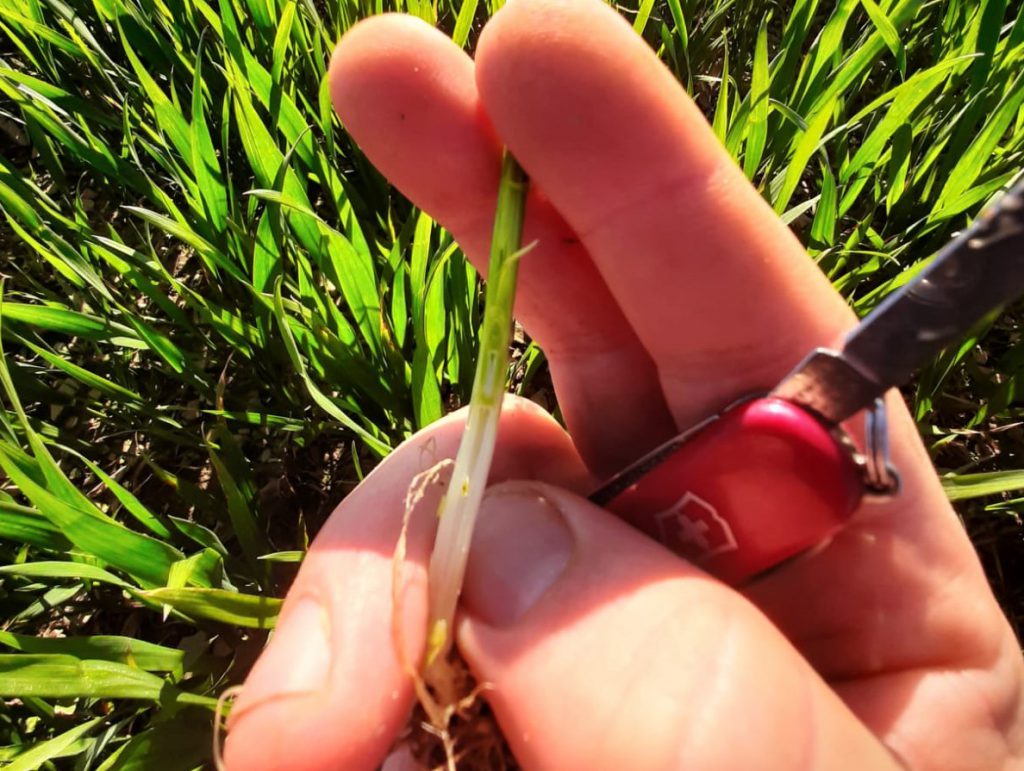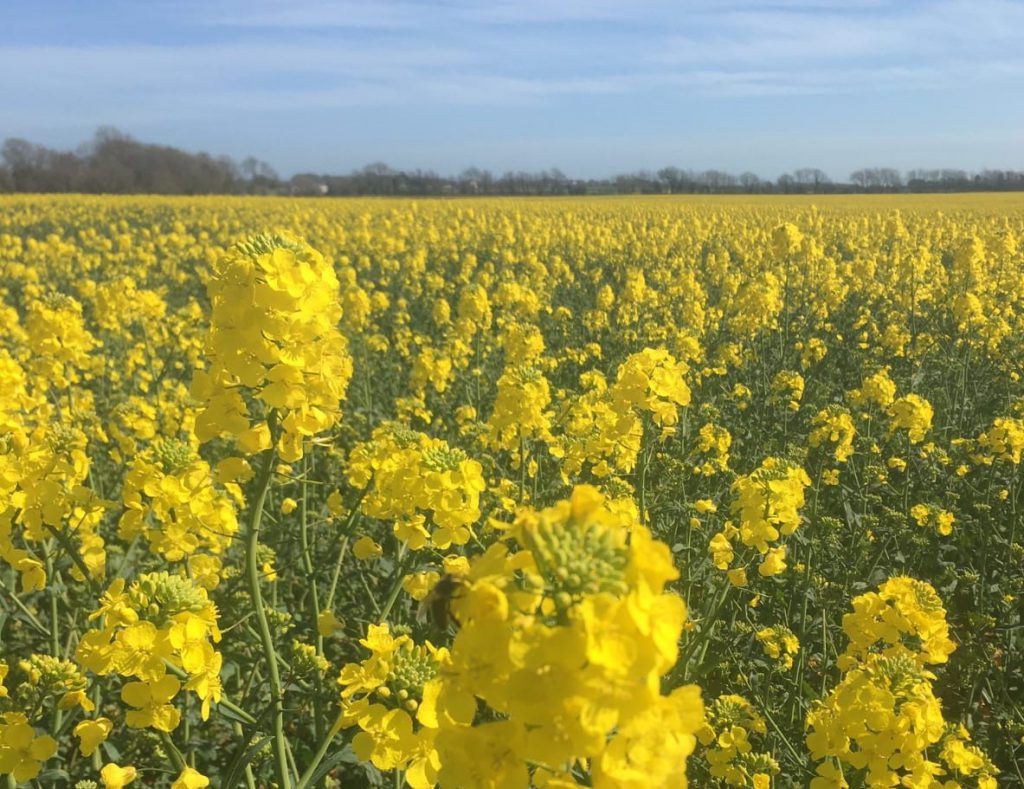Tillage farmers have been busy spraying winter crops in recent weeks and while temperatures dipped at the beginning of this week the dry weather has most people up to date.
In this installment of the Crop Walk Series, AgriLand spoke to Tim McCarthy who is an agronomist with Dairygold and covers the south Cork area for the company.
Winter barley
Winter barley is ranging from GS31 to GS33. All crops have received their main split of nitrogen (N) and are up to date with plant growth regulator (PGR) and trace elements.
Commenting on crops he has seen in the past week Tim said: “In the last two weeks winter barley really transformed. Crops on more challenging ground are a bit slower to get going, but for the most part crops are booming.”
Most crops have received a T1 fungicide. This had a prothioconazole base and in the main Tim was recommending Boogie or a Decoy/Comet mix.
“Barley yellow dwarf virus is also starting to rear its head” as can be seen in this picture (below).
Winter wheat
On winter wheat: “Winter wheat is between GS31 and a very strong GS32. The crops are very advanced; most of them are following beans.
They’re really looking a picture. The T1 will be applied in the next week.
The T0 consisted of chlorothalonil. Opera (epoxiconazole and pyraclostrobin) was added to Bennington and Garrus to help with yellow rust.
The T1 will most likely fall along the lines of Lentyma plus chlorothalonil or Elatus Era plus chlorothalonil.
Keeping an eye out for the bean weevil
Dairygold has seen a considerable increase in the area planted to spring beans, no doubt due in some way to the contract price of €205/t which was available to growers.
Those crops are now above ground and received a pre-emergence herbicide. Tim is looking out for the bean weevil, which he has noticed is more common this season. Ninja will be needed to control this pest.
Spring barley
Dairygold takes in barley for roasting, malting and feed. Those with malting crops have nitrogen applied where the tramlines are up and the remaining will do so in the coming days. Tim noted that farmers are applying between 100 and 110 units/ac of nitrogen to malting crops.
The majority of spring barley is planted and it got going quickly in the warm temperatures. The rain last weekend opened up ground and crops emerged quickly.
“Some spring barley crops are sitting at the two to three-leaf stage now, so early this week there will be aphicides going out.”

Nitrogen was applied to this crop of Planet spring barley last week. image source: Tim McCarthy, Dairygold
OSR, beet and potatoes
Tim added that about 50% of beet crops were planted as of Friday, but he expects the area to fall back slightly as there was a lot of surplus beet this season.
Winter oilseed rape is at mid-flowering and in the next two weeks will be getting a fungicide for sclerotinia. Early potatoes are coming through plastic now and receiving fungicides.
Crop walking in a pandemic
Crop walkers are working solo these days in adherence with HSE guidelines. In Dairygold, recommendations are being passed on electronically via Gatekeeper and FarmFlo, as well as giving farmers advice and recommendations over the phone.
The recommendation is sent straight to the branch and following a discussion with the farmer over the phone the order is packed up and the farmer simply has to drive in and collect their order.




